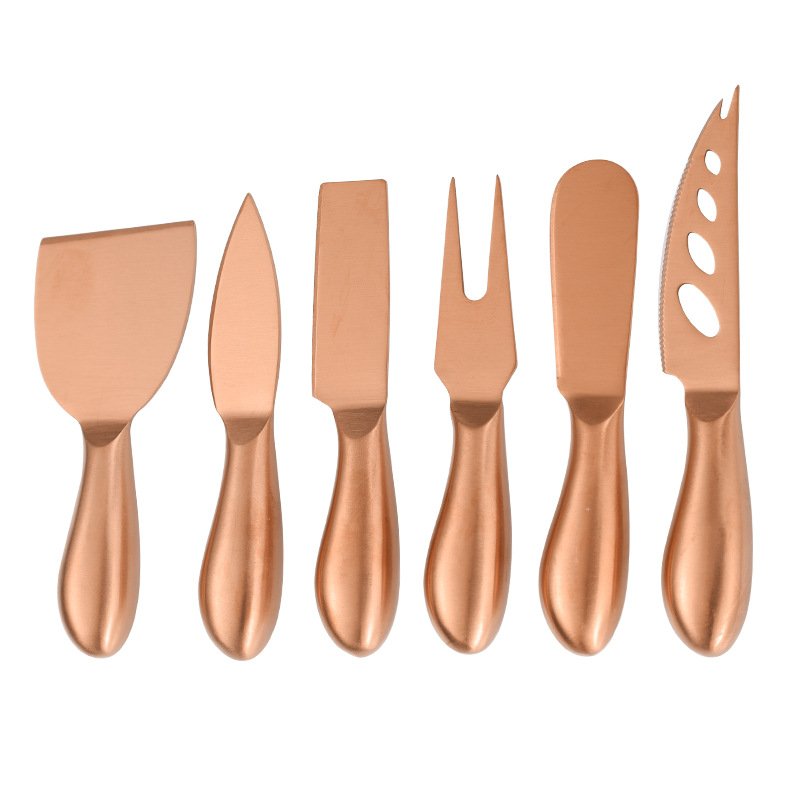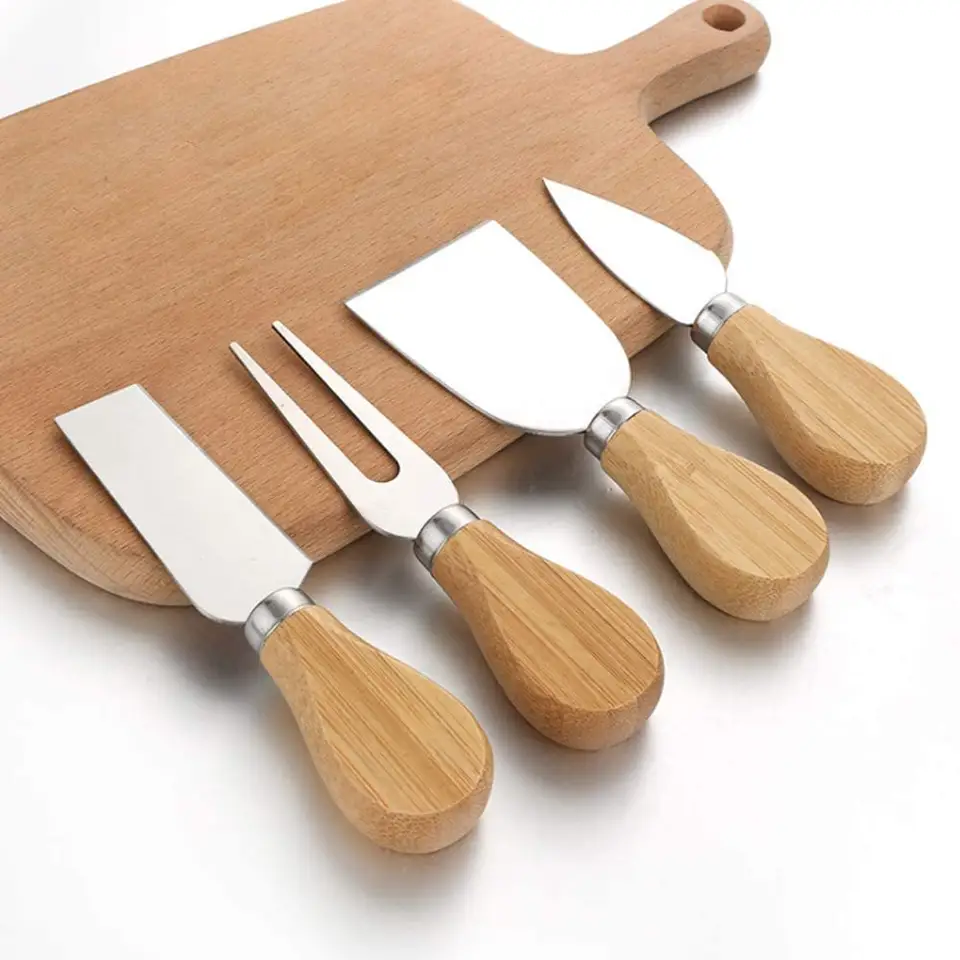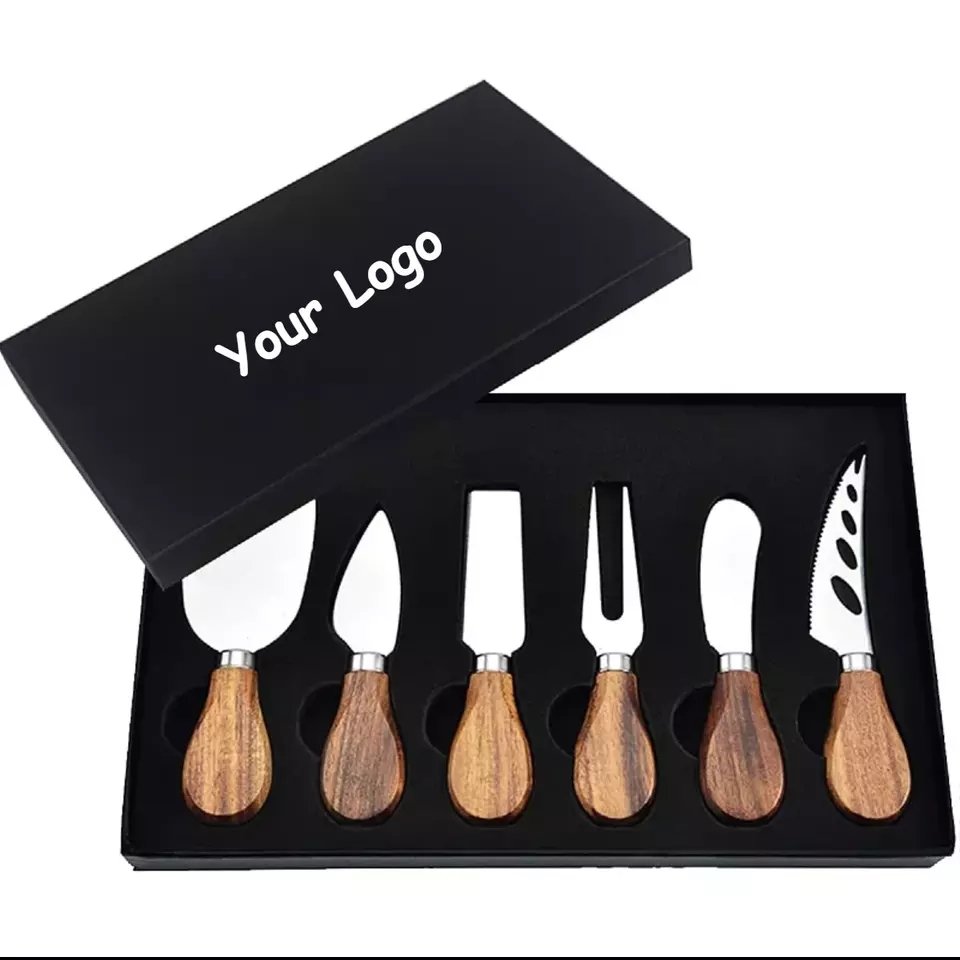Stuck choosing the right flatware for your business while the market keeps shifting? You’re not alone—many buyers feel overwhelmed by trends, numbers, and unknown suppliers.
The global stainless steel flatware market is rapidly expanding, driven by innovation, lifestyle changes, and demand for durable, sustainable materials.
Let’s explore what’s happening in the stainless steel flatware world and why it matters for manufacturers, wholesalers, and design-driven buyers alike.
Table of Contents
How big is the stainless steel market?
Feeling unsure about whether stainless steel cutlery is a niche product or a global force? The numbers speak for themselves.
The stainless steel market exceeded $130 billion in value globally in 2024, with cutlery making up a fast-growing slice of this massive industry.
Let’s break this down and understand what’s really going on.
Global Market Value
The stainless steel market includes raw stainless steel materials for construction, automotive, medical tools, and household items. Flatware, although a smaller segment, has outpaced expectations due to demand for:
– Reusable, eco-friendly alternatives to plastic
– Premium dining experiences at home and in restaurants
– Affordable luxury in emerging economies
🌍 Global Stainless Steel Market vs. Flatware Share (2020–2024)
| Year | Global Stainless Steel Market (USD) | Stainless Steel Flatware Share |
|---|---|---|
| 2020 | $112 Billion | 1.8% |
| 2022 | $122 Billion | 2.1% |
| 2024 | $130+ Billion (estimated) | 2.5%+ (rising steadily) |
Regional Drivers
🌍 Market Focus by Region
| Region | Focus & Strength |
|---|---|
| Asia-Pacific | 🔧 High-volume production & fastest-growing consumption, esp. China, India |
| Europe | 🛡️ Strict quality standards, premium brands, regulation-led innovation |
| North America | 🎨 Strong focus on design, branding, and sustainability |
B2B Demand
Hospitality, retail chains, and OEM projects are key growth drivers. COVID-19 also reshaped home dining habits, which continues to boost residential demand today.
Who is the largest consumer of stainless steel?
We all know stainless steel is everywhere—but who uses the most?
China is the world’s largest consumer of stainless steel, accounting for more than 50% of global demand.
🇨🇳 China – The Undisputed Leader
Lorem ipsum dolor sit amet, consectetur adipiscing elit. Ut elit tellus, luctus nec ullamcorper mattis, pulvinar dapibus leo.
China’s rapid urbanization, infrastructure projects, and export-driven manufacturing make it the top user across sectors. But what about flatware?
🌍 Global Stainless Steel Cutlery Market Insights
Domestic Market: The growing middle class in emerging economies, particularly in China and India, is driving demand for premium lifestyle upgrades, including high-quality kitchenware like stainless steel cutlery.
🌏 Export Volume: China continues to dominate the global stainless steel cutlery export market, supplying over 60% of the world’s cutlery exports, making it the leading manufacturer and exporter.
🌍 Other Major Consumers
🌎 Stainless Steel Usage by Region & What Drives It
| Country/Region | Primary Stainless Steel Use | Key Drivers |
|---|---|---|
| 🇮🇳 India | Construction, rail infrastructure | Rapid urbanization and population growth |
| 🇪🇺 EU (Germany, Italy) | Household goods, kitchenware | Demand for high-end consumer products & strict regulations |
| 🇺🇸 USA | Automotive, dining utensils | Strong quality standards & evolving design trends |
| 🇯🇵 🇰🇷 Japan, Korea | Appliances, compact kitchen tools | Tech innovation and space-efficient living |
💬 My Insight
As a supplier in China, I’ve seen firsthand how quickly our factory orders change with European trends, while also fulfilling bulk OEM requests from Southeast Asia. Demand is shifting in volume and in quality expectations.
What is the market outlook for stainless steel flat products?
Is now the right time to invest in stainless steel flatware—or is the boom already over?
The global stainless steel flat products market is projected to grow at over 5% CAGR through 2030, driven by durability, hygiene, and recyclability.
📈 What's in a Flat Product?
Flat stainless steel products include:
– Cutlery
– Sinks
– Cookware bases
– Appliance panels
– Architectural sheets
Cutlery is considered a “finished consumer flat product,” combining aesthetic, functional, and food-safe value.
📊 Stainless Steel Product Market Growth Forecast (2025–2030)
| Product Type | CAGR (2025–2030) | Market Momentum |
|---|---|---|
| 🍴 Flatware | 6.2% | 🟢 Strong – Premium segment rising due to lifestyle upgrades and sustainability focus |
| 🚰 Sinks | 4.5% | ⚪️ Moderate – Stable growth, driven by renovations and urban housing demand |
| 🏢 Architectural Uses | 5.1% | 🟢 Positive – Boom in commercial construction, especially in Asia-Pacific and Middle East |
♻️ Sustainability as a Driver
Flatware made from stainless steel supports:
– Reusability (vs. disposable plastic)
– Long product lifespan
– 100% recyclability with minimal degradation
🔧 Innovations to Watch
– Laser-engraved surface treatments
– Lightweight but solid grip designs
– Nickel-free compositions for allergy-sensitive markets
When did stainless steel flatware become popular?
Ever wonder why stainless steel flatware is everywhere now? It hasn’t always been.
Stainless steel flatware gained widespread popularity after World War II, as production scaled and nickel shortages forced innovation.
🕰️ Quick Timeline
🕰️ Timeline of Stainless Steel Cutlery Development
| Decade | Key Milestone |
|---|---|
| 1913 | 🔬 Stainless steel invented by Harry Brearley in the UK |
| 1920s | 🍽️ First use in cutlery – beginning of a new era |
| 1950s | 🏠 Mass adoption post-WWII, especially in Western homes |
| 1980s | 🌏 Asian manufacturing boom, led by China & India |
| 2000s+ | 💎 Rise of premiumization, custom design & branding trends |
💡 Post-War Boom
After WWII, economies wanted durable, affordable products for home rebuilding. Stainless steel was ideal:
– Didn’t rust like carbon steel
– Didn’t tarnish like silver
– Didn’t cost as much as precious metals
🌐 Globalization's Role
In the 1990s and 2000s, as China and India opened up manufacturing, stainless steel cutlery went from “Western staple” to “global standard.”
I remember early in our factory’s days, German buyers loved our durability but asked for custom handle curves. That sparked our focus on both performance and design, leading us to grow.
Who is the largest producer of stainless steel in the world?
You might guess it already—but let’s confirm with the facts.
China is the largest stainless steel producer globally, manufacturing over 60% of the world’s total output.
🏭 Global Production Landscape
🌎 2024 Global Stainless Steel Output by Country
| Country | Output (Million Tons) | Global Market Share |
|---|---|---|
| 🇨🇳 China | 34+ | ~60% |
| 🇮🇩 Indonesia | 4.5 | ~8% |
| 🇮🇳 India | 3.8 | ~7% |
| 🇯🇵 Japan | 2.5 | ~4% |
| 🇺🇸 USA | 2.3 | ~4% |
China not only produces raw material but also exports massive volumes of finished products—especially kitchenware and flatware.
🧱 Industrial Clusters
📋 Regional Specialization Table
| City / Region | Specialty |
|---|---|
| Foshan & Jieyang | Flatware & cookware manufacturing |
| Wuxi | Stainless steel material trading |
| Ningbo & Yangjiang | OEM cutlery production for export brands |
Our own company is in Guangdong, and we often collaborate with mold experts in Yangjiang, where entire towns focus solely on blade forming, polishing, or handle assembly.
What are the three grades of stainless steel?
Trying to pick the right stainless steel for your product line can be confusing—numbers like 304, 316, or 430 float around everywhere.
The three main grades of stainless steel used in flatware are 18/10 (304), 18/8 (also 304), and 18/0 (430), each offering different levels of durability and cost-efficiency.
🧪 Basic Chemistry
🧪 Stainless Steel Grades: Composition & Common Use
| Grade | Chromium % | Nickel % | Other Elements | Typical Applications |
|---|---|---|---|---|
| 18/10 (304) | 18% | 10% | Iron, Carbon | 🍽️ Premium cutlery, cookware, high-end flatware |
| 18/8 (304) | 18% | 8% | Iron, Carbon | 🍳 Mid-range kitchen tools, food containers |
| 18/0 (430) | 18% | 0% | Iron, Carbon | 💲 Budget cutlery, school cafeterias, magnetic-friendly use |
🔍 Comparison Table
| Feature | 18/10 | 18/8 | 18/0 |
|---|---|---|---|
| ✨ Shine | High – mirror finish | Medium – decent gloss | Low – matte, duller |
| 🛡️ Corrosion Resistance | Excellent – best protection | Very good – suitable for daily use | Fair – may rust with time |
| 🧲 Magnetic? | No | No | ✅ Yes – ideal for magnetic use |
| 💰 Price | High | Medium | Low – budget friendly |
| 🏠 Best Use Case | Hotels, luxury homes | Restaurants, mid-tier hospitality | Schools, institutions, mass catering |
I always advise our customers this: “Don’t just ask for 304—check the nickel content too.” Because in practice, there’s a big difference between 18/10 and 18/8, especially for long-term corrosion resistance.
What is the global stainless steel production forecast?
Worried about raw material availability in the future? You’re not alone—so let’s look at projections.
Global stainless steel production is forecast to grow steadily, reaching over 65 million metric tons annually by 2030.
📊 Growth Projections
📈 Projected Global Stainless Steel Production & Growth Drivers (2024–2030)
| Year | Production (Million Tons) | Primary Growth Driver |
|---|---|---|
| 2024 | 58.5 | 🏗️ Infrastructure expansion & home appliances demand |
| 2026 | 61.2 | 🔋 Rise of EV battery housings & green construction |
| 2028 | 63.8 | 🍽️ Surge in food-grade exports & global kitchenware boom |
| 2030 | 66.1 | 🏭 Adoption of smart manufacturing & sustainability goals |
🌿 Sustainability is Shaping the Market
Stainless steel’s recyclability is becoming a core feature, not just a bonus.
| Sustainability Point | Details |
|---|---|
| ♻️ Recyclability | Over 90% of stainless steel can be recycled |
| 🌐 Scrap-Based Production | Encouraged in EU, Japan, reduces reliance on virgin ore |
| 💨 Carbon-Neutral Goal | More mills aim for zero-emission stainless steel via green technologies |
From what I see, B2B buyers (especially in Germany and France) now *ask* if our products are made from recycled stainless steel. That wasn’t the case 5 years ago.
What is the biggest market for steel?
Steel is everywhere—from skyscrapers to spoons. But where’s the biggest slice of the pie?
The construction industry is the biggest market for steel, consuming over 50% of global production.
🏗️ Steel Across Industries
🏭 Stainless Steel in Major Industries: Usage Share & Applications
| Industry | Total Steel Share (%) | Stainless Component (%) | Example Use |
|---|---|---|---|
| 🏗️ Construction | 50%+ | Low (~2–3%) | Beams, structural panels, urban infrastructure |
| 🚗 Automotive | 12–15% | Medium (~10–15%) | Exhaust systems, chassis parts, decorative trims |
| 🧊 Appliances | 8–10% | High (~40–50%) | Fridges, sinks, kettles, cutlery, washing machine drums |
| 🍽️ Food & Kitchenware | ~5% | Very High (60–80%+) | Cutlery, cookware, food-grade tanks, processing lines |
Flatware is only a fraction, but its value-added ratio is high—meaning small volumes bring significant profit margins, especially when design or branding is involved.
Who are the largest importers of stainless steel?
Global trade flows aren’t just about who produces—they’re also about who *needs* it most.
The largest importers of stainless steel include Germany, the United States, South Korea, and Italy.
🌍 Who Buys What?
🌐 Major Stainless Steel Importing Countries & Their Focus (Latest Data)
| Country | Import Volume (Million Tons) | Primary Import Type |
|---|---|---|
| 🇩🇪 Germany | 1.9 | Semi-finished goods, flatware components |
| 🇺🇸 United States | 1.7 | Flat sheets, kitchen & household products |
| 🇰🇷 South Korea | 1.2 | Automotive-grade stainless steel |
| 🇮🇹 Italy | 1.0 | Precision steels and cutlery materials |
💼 B2B Insight
These countries often import stainless steel for high-spec manufacturing—then re-export as premium goods. For example:
🌐 How Top Importing Countries Add Value to Stainless Steel Flatware
| Country | Role in the Supply Chain | Value-Add Activity |
|---|---|---|
| 🇩🇪 Germany | Final processing & assembly | Imports blanks from China, adds custom-designed handles |
| 🇮🇹 Italy | Precision finishing & branding | Uses imported steel to create designer-level flatware lines |
| 🇺🇸 USA | Branding & retail distribution | Imports OEM-ready products, applies private labeling |
As a supplier, I’ve learned to study not just country *names* but buyer *types*. A German buyer may have completely different needs than a Korean one—even if they order the same 304 steel base.
How much stainless steel does the US produce?
If the US imports so much—how much do they actually make themselves?
The US produced around 2.3 million metric tons of stainless steel in 2024, primarily for domestic automotive and appliance use.
🏭 Key Facts
| Region | Production Focus | Key Manufacturers |
|---|---|---|
| Indiana | Melting & cold-rolling | North American Stainless |
| Ohio | Stainless alloying & processing | ATI, NAS support facilities |
| Pennsylvania | Advanced specialty alloys | ATI (Allegheny Technologies HQ & operations) |
🧩 Domestic vs. Imported Use
🧭 Steel Source Usage by Product Category (China as Example)
| Category | Domestic Steel Use | Imported Steel Use |
|---|---|---|
| 🚗 Automotive | ✅ Widely used for frames & components | 🔘 Occasionally for specialty alloys |
| 🧊 Appliances | ✅ Core material for body and interiors | 🔘 Some high-polish or precision parts |
| 🍴 Cutlery | 🔘 Basic models may use local steel | ✅ High-end flatware often uses imported 304 or 316 |
The US still leads in high-spec uses (like aerospace), but everyday consumer goods often come from abroad due to cost and labor differences.
Who is the largest consumer of steel in the US?
Within the US—who’s using all this steel?
The construction industry is the largest consumer of steel in the US, followed by the automotive sector.
🔍 Industry Analysis
🇺🇸 Steel Use by U.S. Industry & Flatware Relevance
| U.S. Sector | Steel Use Share (%) | Relevance to Flatware |
|---|---|---|
| 🏗️ Construction | 42% | Low – Structural steel, minimal food-contact use |
| 🚗 Automotive | 22% | Indirect – Tooling & industrial equipment |
| 🧊 Appliances | 12% | Medium – Includes cutlery, sinks, cookware parts |
| 🍽️ Foodservice / Kitchenware | ~4% | High – Directly tied to cutlery, trays, utensils |
The takeaway here is: while flatware isn’t the top steel user—it *rides the wave* of demand, benefiting from large-scale price and production trends.
Why is sustainability a key trend in stainless steel cutlery?
Customers no longer just care about shine—they care about the story behind the shine.
Sustainability is driving innovation in stainless steel cutlery, from recycled materials to energy-efficient production.
🌱 Why Now?
📋 Structured Table: Sustainability Drivers
| Trend Type | Description |
|---|---|
| 🌐 Policy & Legislation | Single-use plastic bans in EU, Canada, US shift demand to stainless alternatives |
| 👥 Consumer Demographics | Millennials & Gen Z treat “eco-friendly” as essential, not optional |
| 🏨 B2B Procurement | Hotels & restaurants request certified sustainable sources for cutlery |
In our factory, we’ve received more RFQs (Request for Quotation) mentioning “low carbon steel” or “recycled content” in 2024 than in the past five years combined.
♻️ Sustainability Strategies
| Practice | Description | Market Response |
|---|---|---|
| ♻️ Recycled Stainless Steel | Use of scrap-based 304/430 for lower resource impact | EU & US buyers increasingly prefer recycled content |
| 🌬️ Low-Emission Manufacturing | CO₂ reduction during melting, rolling, polishing stages | Premium brands use it in marketing and labeling |
| 📦 Eco-Packaging | Replacing plastic with kraft paper, recyclable cardboard | Favored by restaurants & Amazon eco-brand policies |
| 🔧 Extended Product Lifecycle | Lifetime warranty, reusability, or repairable cutlery | Boosts value perception and aligns with low-waste goals |
📌 Reality Check
But here’s a truth many won’t say: not all “eco” cutlery is truly sustainable. Some use recycled materials but ship products inefficiently. Others reduce nickel (which makes steel cheaper) and call it “green,” even though that compromises durability.
This is where certifications come in.
What stainless steel certifications matter for global trade?
You’ve probably seen labels like “FDA Approved” or “LFGB Certified” on cutlery listings—but what do they really mean?
The most relevant stainless steel certifications include FDA, LFGB, DGCCRF, ISO 9001, and BSCI—each reflecting different safety, quality, or ethical standards.
🛡️ Food Safety First
✅ Key Certifications for Stainless Steel Cutlery by Market
| Certification | Country/Region | Compliance Focus | Typically Required For |
|---|---|---|---|
| 🇺🇸 FDA | USA | Food contact material safety | Export & sales in the United States |
| 🇩🇪 LFGB | Germany / EU | No migration of harmful substances | Sales in Germany, Amazon DE, EU B2B |
| 🇫🇷 DGCCRF | France | Food-grade composition & labeling | Entry into the French retail market |
| 🇨🇳 GB 4806 Series | China | Domestic food contact safety standard | Sales within mainland China |
📋 Factory & Ethical Compliance
🏭 Factory-Level Certifications for Stainless Steel Exporters
| Certification | Meaning | Common Use |
|---|---|---|
| ✅ ISO 9001 | International standard for quality management systems, ensuring product consistency and traceability | Required for most export-oriented factories across industries |
| 🤝 BSCI | Business Social Compliance Initiative – covers ethical labor practices, working hours, safety, no child/forced labor | Widely requested by European retailers and Amazon EU suppliers |
| SEDEX | Social and environmental practices | UK & EU buyers |
I remember a Turkish buyer (let’s call her Lisa) asking us *“Can you do LFGB or I have to find another supplier?”* That was a turning point—we got the certification, and that relationship led to 3 other referrals.
How do regional preferences affect stainless steel flatware?
Not all forks are created equal—especially across borders.
European, North American, and Asian buyers prefer different shapes, weights, and finishes in stainless steel flatware, based on cultural and dining habits.
🍽️ Regional Preferences Summary
🌎 Regional Preferences in Stainless Steel Cutlery Design
| Region | Design Preference | Typical Features |
|---|---|---|
| 🇪🇺 Europe | Balanced weight, matte or satin finish | Long handles, minimalist lines, deep soup bowls |
| 🇺🇸 North America | Heavyweight, shiny mirror polish | Thick stems, decorative edges, dishwasher-safe design |
| 🌏 Asia | Slim, lightweight, elegant curves | Chopstick-friendly lengths, rice spoon sets, ergonomic grip for smaller hands |
🧠 Why It Matters for B2B
| Buyer Type / Market | Key Preference | Typical Reason |
|---|---|---|
| 🇫🇷 French Hotel Buyers | Prefer brushed or satin finishes | Hides fingerprints, maintains elegant dining presentation |
| 🇺🇸 US Supermarkets (e.g., Costco) | Favor mirror-polished bulk sets with gift boxes | Attractive for seasonal promos, family dining & gifting |
| 🇯🇵🇰🇷 Japanese/Korean Importers | Demand lightweight, delicate designs | Suitable for refined multi-course meal service culture |
🎨 Design Meets Production
What works in CAD doesn’t always work in real life. Mold depth, polishing time, and balance all change by region. That’s why our design team often tests *mock-up weights* for target markets—what feels luxurious in Italy may feel clunky in Japan.
What innovations are shaping the future of stainless steel cutlery?
Trends don’t stop at shape—they cut right into materials, coatings, and production tech.
Innovations like PVD coating, 3D pattern engraving, and AI-driven mold design are reshaping stainless steel flatware production.
🔧 Material & Finish Upgrades
✨ Design & Surface Innovations in Stainless Steel Flatware
| Innovation | What It Does | Benefits |
|---|---|---|
| 🌈 PVD Coating | Adds a titanium/carbon-based decorative film | Enables durable color options (gold, black, rose gold); no fading or peeling |
| 🧼 Anti-Fingerprint | Uses micro-polishing or surface treatment | Reduces visible smudges — ideal for buffets, hotels, restaurants |
| 🎨 Dual-Finish | Combines matte and mirror finish in one piece | Creates modern, trendy aesthetics loved by Gen Z consumers |
🤖 Smart Production
🤖 Smart Manufacturing Innovations in Cutlery Production
| Innovation | What It Does | Key Benefits |
|---|---|---|
| 🧠 AI-assisted Mold Design | Uses machine learning to optimize mold geometry and structure | Faster prototyping, reduced material waste |
| ✨ Laser-Guided Polishing | Robotic arms polish with pinpoint accuracy via laser tracking | Consistent surface finish, improved production speed |
| ❄️ Low-Temperature Stamping | Applies pressure without excessive heat to form cutlery shapes | Maintains material strength, lowers energy consumption |
🔁 Flexible MOQ + Mass Customization
– MOQ from 500 sets for custom engraving
– Digital ordering platforms with live preview
– Just-in-time production reduces overstock
We’ve shifted from “produce what we have” to “produce what the buyer imagines”—that’s the core transformation I’ve seen in our business in the past 3 years.
From exports and grades to forecasts and consumers, the global stainless steel flatware market is more than a niche—it’s a mirror of industrial progress. Understanding where the steel flows and how it’s used can help any buyer, designer, or supplier make smarter, more profitable decisions.





